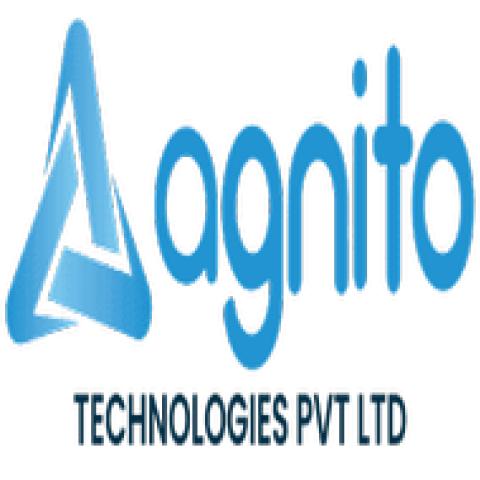Speed is the key factor for every remittance. Customers wish to send and receive money fast, and you as a business want to facilitate fast transaction processing. And specifically in the cross-border payment landscape, it has become one of the most important factors.
So, if you are still using traditional systems to offer cross border payments to your customers, you will lag behind and lose a major chunk of customers. But, do not worry, fast transactions can be a game changer for your business. All you need is robust international remittance software.
But, before you make that decision to find and implement such software in your business, You must read this blog. This blog will help you understand the importance of fast transactions, and how they can redefine the cross-border payment landscape.
Let’s begin!
The Traditional Challenges of Cross-Border Payments
Cross border remittance has always been problematic, expensive, and time-consuming for many people. This, as you might realize, is due to the presence of multiple intermediaries in ‘conventional’ means of remittance, which also results in time and cost overruns.
However, in the past, making a payment at the international level took three to five business days, or even considerably more than that. This lag would hinder the cash flow and annoy any enterprise and its clients.
Besides the delays, one had to struggle with the little or no sense in the transaction because of the overcharge of undisclosed elements, the need for alteration of currency, and the variety of legal barriers. For businesses like yours, it was more management headaches. And for the customer, it was more dissatisfaction.
Well with quick payments, all of this is about to change. Payments are becoming real-time, the financial industry is changing rapidly to real-time processing, and your business cannot afford to be left behind.
The Impact of Fast Transactions on Cross-Border Payments
When we take a look at how fast payments have taken up the mantle of becoming the new global standard, we see that they are quite transformative in the context of cross-border payments. The question is not whether you should go for faster transactions, but how fast you can do so.
First, let’s consider primary advantages.
Real-Time Settlements
No longer will you have to wait a couple of days for a payment to go through. Real-time settlements: Now you can complete transactions within just a few seconds or minutes, no matter how far apart.
This improvement transforms the way businesses operate and provides instant access to funds while speeding up supply chain processes. For banks and financial institutions like yours, real-time payments offer a crucial advantage by making it easier to manage cash flow and liquidity.
Think about services like SEPA Instant in Europe or FedNow in the U.S., where payment systems have set the stage for near-instant cross-border settlements. These solutions streamline processes, reduce the need for intermediaries, and enable faster global business.
Cost Efficiency
When you reduce the number of intermediaries involved in a transaction, the costs come down. Fast transactions make this possible. Peer-to-peer payment systems or blockchain-based platforms are cutting out the middlemen, reducing transaction fees for both you and your customers.
If your business is still relying on outdated systems that require multiple parties to complete a payment, it's time to consider upgrading to advanced remittance management software. With fast cross-border payments, you can save both time and money, creating more value for your institution and clients.
Improved Transparency and Tracking
In the traditional cross-border payment process, delays were often compounded by the lack of transparency. Customers and businesses had no real-time visibility into the status of their payments. This is no longer the case with fast transactions. Today, advanced tracking tools and real-time updates give you—and your clients—greater control over the payment journey.
Blockchain technology plays a huge role here, providing an immutable record of transactions that can be accessed and monitored at every step. This transparency builds trust with your customers, and for you, it makes operations smoother.
Technologies Driving Faster Cross-Border Transactions
To stay competitive, banks, fintechs, and financial institutions must leverage new technologies that enable fast, seamless cross-border payments. Here are the key innovations that are driving these changes.
Blockchain and Distributed Ledger Technology (DLT)
Blockchain is more than a buzzword—it’s the backbone of many fast cross-border payment solutions. By decentralizing transactions and providing a transparent, tamper-proof ledger, blockchain eliminates many of the inefficiencies of traditional payment systems.
Ripple and Stellar are great examples of blockchain-based platforms that are facilitating faster cross-border payments. They cut down on settlement times, reduce costs, and ensure security—all essential for financial institutions like yours.
API Integration
By integrating APIs, your business can connect seamlessly with different financial systems around the world. This connectivity enables fast, efficient payment processing.
APIs enable you to offer your clients faster, more convenient services. Whether you’re integrating with payment processors, foreign exchange providers, or other financial systems, APIs allow you to streamline operations, cut down on transaction times, and improve the user experience.
ISO 20022
ISO 20022 standardizes communication between financial institutions and makes cross-border payments smoother and faster. By adopting ISO 20022, your business can reduce errors, delays, and ensure better compliance in global payment networks.
Business Benefits of Fast Cross-Border Payments
Fast transactions are more than just a technological upgrade—they represent a fundamental shift in how remittance businesses operate. Here’s why they matter for your business.
Enhanced Customer Experience
Your customers expect quick, hassle-free payments. With real-time cross-border transactions, you can meet this demand while providing instant satisfaction. Faster payments mean fewer delays, better customer satisfaction, and ultimately, greater loyalty.
Increased Liquidity
Fast transactions allow businesses to access their funds immediately. For your business, this means better cash flow management and less time spent waiting for settlements.
When your customers can access their funds quickly, they are able to reinvest those resources or use them to meet urgent business needs.
Cross-Border Expansion Opportunities
Fast cross-border payments open doors to global expansion. Your business can enter new markets more confidently when they know their payments will be processed quickly and securely.
It’s also an opportunity to grow your own market share by providing essential services to businesses that rely on international transactions.
Conclusion
Fast transactions are changing the cross-border payments landscape, offering a new level of efficiency, cost savings, and customer satisfaction. As a remittance business, embracing these advancements will position you as a leader in the global financial ecosystem. By leveraging the power of real-time payments, blockchain, and other innovations, you can enhance your services, improve operational efficiency, and expand into new markets.
The future of cross-border payments is fast. Is your institution ready?

















